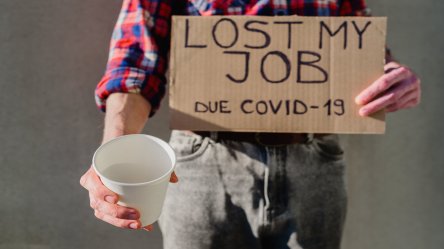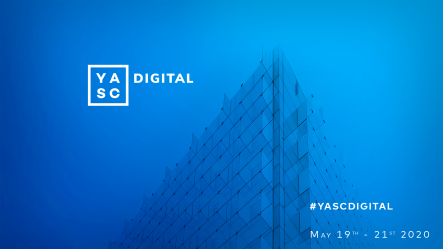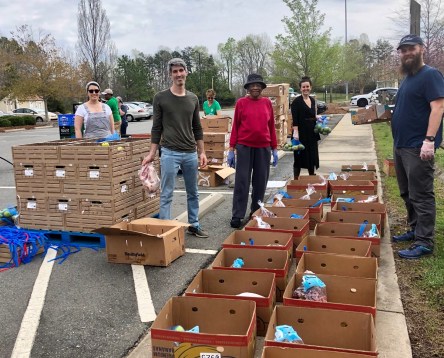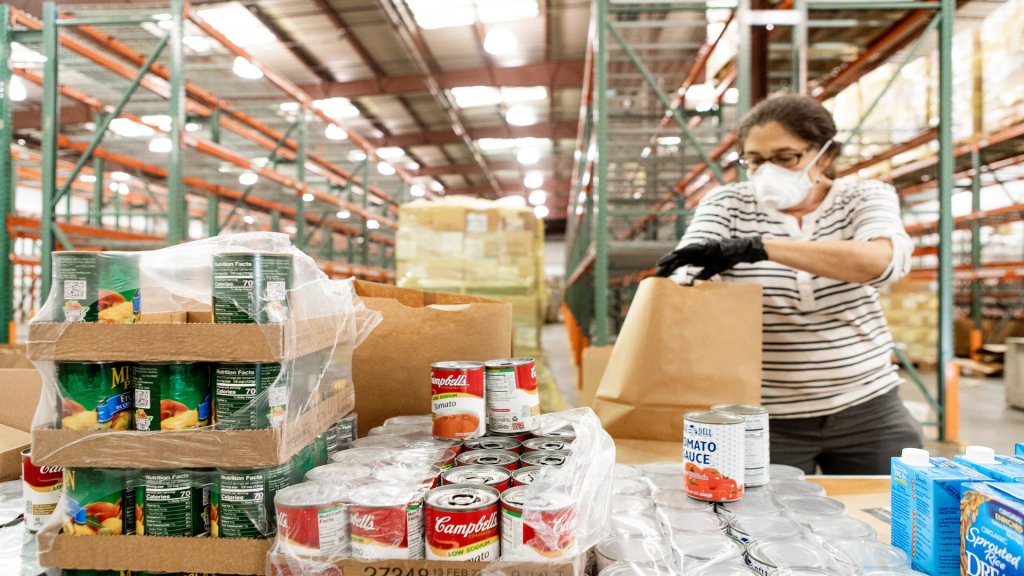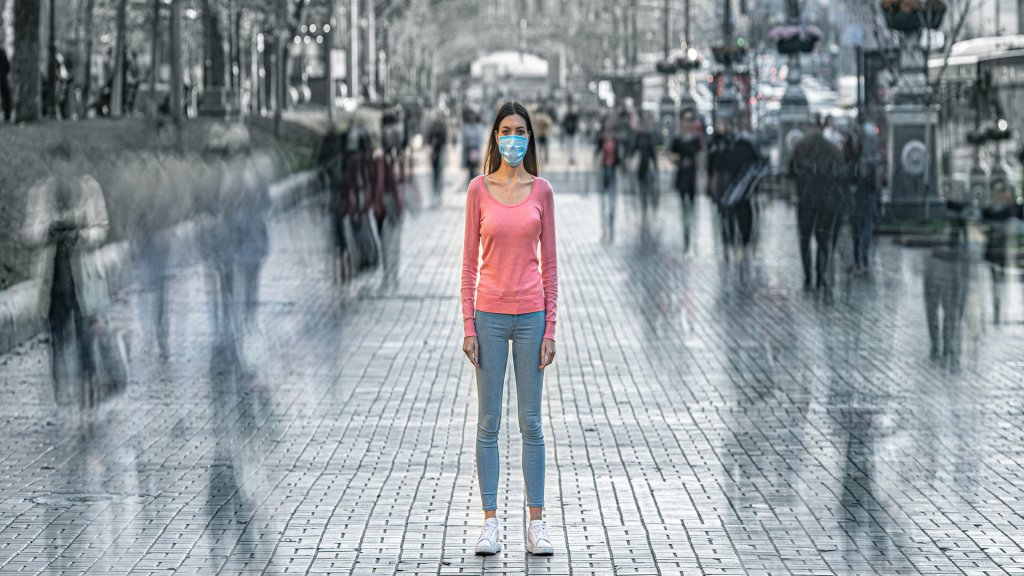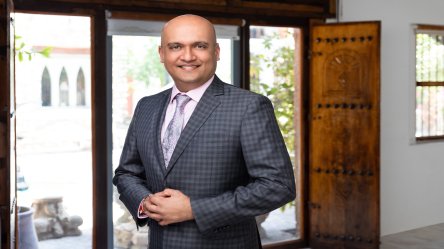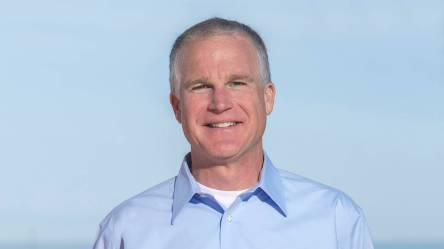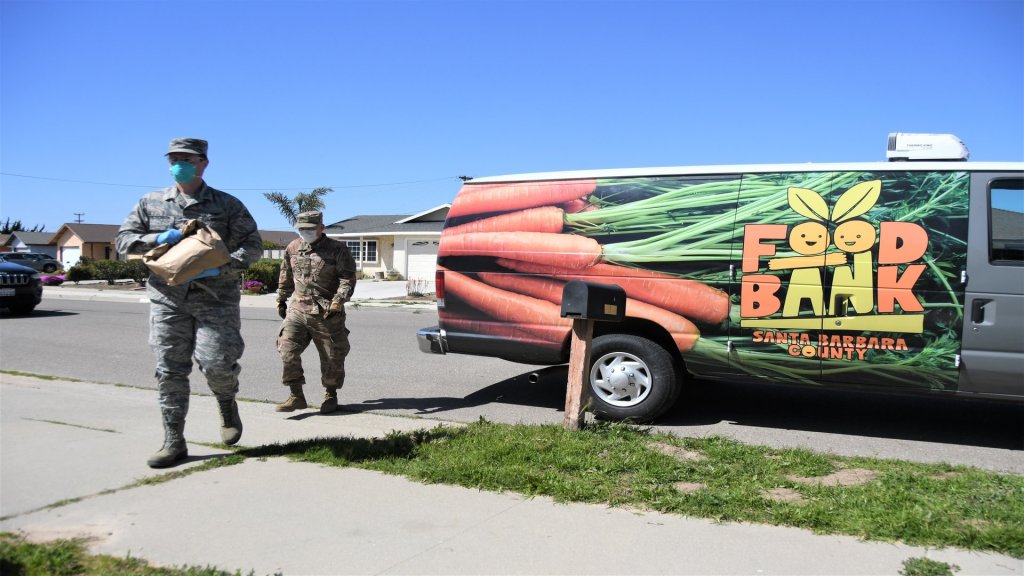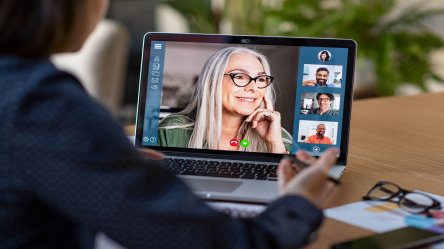Each week’s news seems to bring a new wave of devastation for the U.S. employment market, as unemployment claims continue to climb due to the COVID-19 pandemic. The national unemployment toll was 36.5 million jobs lost when this was written – by the time you read it, that figure will likely be higher. Yardi Matrix® dove into the unemployment data to find out which sectors and geographic regions are hardest hit, which will hold up and where the unemployed may want to look for their next opportunity. Unlike past recessions, job losses have not been spread across the economy. Layoffs and furloughs have been concentrated in segments most affected by shelter-in-place orders: retail, leisure, travel and entertainment, and jobs in which social distancing is difficult. Between February and April, leisure and hospitality jobs contracted by a jaw-dropping 48.1%, or 8.1 million workers. Other hard-hit segments include other services (-21.9%), a category that includes personal services and repairs, retail trade (-13.7%) and construction (-12.7%). The number of lost jobs has been higher among hourly, service-based workers than for career workers who more easily can work from home. On a proportional basis, job categories that shed the fewest jobs over the last three months are financial activities (-2.8%), government (-4.3%) and wholesale trade (-6.2%). Another segment that lost relatively few jobs was professional and technical services (-5.3%), which includes computer systems design services (-3.8%). “This report provides in-depth insight to the most durable employment sectors, both professionally and geographically,” said Jeff Adler, vice president of Yardi Matrix. Find the full Durable Employment Sectors report from Yardi...
Changemakers Series
Michael Schonbrun, Balfour
Changemakers is back for 2020 with a whole new class of senior living leaders! Published by Senior Housing News (SHN) and sponsored by Yardi, the series spotlights industry pioneers who’ve taken unique approaches towards shaping the future of senior living. And this time around, these are also leaders who’ve shown what it takes to safely navigate their communities through the current health care crisis. For the first inductee, meet Michael Schonbrun, founder and CEO of Balfour Senior Living. Schonbrun got his start in senior living while researching communities for his mother to live in. He decided he wanted to build one that she herself would love. So in 1997, he founded Balfour in Colorado, and the company has grown steadily since. They now have nine locations, with three more under construction. Prior to senior living, Schonbrun had spent a decade in charge of National Jewish Health, a leading respiratory clinical and health care research center. That experience has helped position Balfour well for the pandemic. From the first signs of trouble, Schonbrun and his team have taken the coronavirus seriously. In this excerpt from the SHN interview, see how Schonbrun’s unique background and proactive measures have kept Balfour’s residents and staff safe. How has COVID-19 impacted Balfour and influenced your thinking — and the industry’s? Do you think people are going to see more value in having on-site health care? The answer to that last question is yes. My first 10 years after getting out of law school I spent in the public health and health care regulatory environment. I think one of the benefits of COVID-19 — if you want to call it that — is that there’s going to be a willingness to invest in public health and to appreciate that, as...
Self Storage Outlook
SSA Webinar with Yardi Matrix
Self storage is still considered among the most stable real estate sectors during rocky economic times, but it is not immune from the COVID-19 crisis, attendees of the May 19 SSA Webinar presented by Yardi Matrix experts learned. “Under the best of circumstances, and short of a medical solution, recovery is going to be partial and slow,” said Jeff Adler, vice president of Yardi Matrix, at the start of the presentation. Adler and Chris Nebenzahl, institutional research manager for Matrix, presented the current outlook for self storage as it navigates changing tides. If you missed it, find the presentation materials and a recording of the session. While the industry looked strong in March, things shifted in April. National street rates for 10×10 non climate controlled (CC) units fell 2.6 percent, and rates for 10×10 CC units fell 6 percent. That was the largest decline in more than three years. The impact was nearly universal, as street rates for non-CC units fell in 97 percent of the major markets tracked by Yardi Matrix, and CC units saw declines in every market tracked. Only Raleigh-Durham and Portland, Ore. saw non-CC street rates drop less than in previous months, and Phoenix stayed completely flat (see slide at left). Nationwide, Yardi Matrix tracks a total of 2,209 self storage properties in various stages of development, comprising 593 under construction, 1,172 planned and 444 prospective properties. Matrix also maintains operational profiles for 25,914 operating self storage businesses, bringing the total data set to 28,123. The COVID-19 crisis has yet to slow self storage development, however, as properties under construction or in the planning stages account for 9 percent of the market in April, a 20-basis-point increase over March. That’s expected to change in the coming months. “We expect...
YASC Digital
Success on Demand
Assembling more than 2,000 clients and employees in Washington, D.C., for the spring Yardi Advanced Solutions Conference wasn’t an option. But Yardi got creative and delivered all the expected benefits of YASC in a new way this month. YASC Digital, which was free to clients, comprised more than 125 on-demand courses on asset and investment management software innovations. Spotlight sessions addressed developments in the multifamily, commercial, investment management, affordable and PHA market segments. The virtual conference attracted 16,000 participants from 2,500 companies in 30 countries, with attendees completing 107,000 courses and viewing 50,000 hours of content over three days. Yardi product specialists fielded thousands of live chat requests. Company president and founder Anant Yardi, offering a video welcome in lieu of “meeting and greeting,” reaffirmed the company’s dedication to maintaining superior client service in the COVID-19 environment. Noting the company’s $2 million donation to food banks that are helping communities in the U.S. and Canada weather the pandemic, Mr. Yardi invited his audience to “tackle the future with resolve and optimism.” (The company also donated $25 to food banks for every selfie submitted during YASC Digital – see many of the submissions in the gallery below.) The YASC Digital experience resonated positively with participants. “Thank you to everyone on the YASC team for putting together the digital format … which allows us all to continue to learn and grow with Yardi,” said Scott Teem of Portland, Ore.-based Guardian Real Estate Services LLC. “Thanks in no small part to Yardi, we’re doing fine,” added David Wise of Philadelphia-area LCOR. “Thank you for supporting the local food banks and for keeping us all connected!” said James Juliano, checking in from Berkshire Residential Investments in Boston. Watch a recap of the event: Clients will receive an email...
Support for Seniors
Pulling Through Together
COVID-19 poses many challenges to senior living, but providers, and the public at large, are stepping up to help residents and staff in every way they can. A few weeks back, I shared a few positive stories of support in the industry. Since then, the coronavirus outbreak has continued to spread, but communities have continued to get creative in their response. Here are a couple more stories featuring Yardi clients that we hope will make you smile: Crafting a clear connection For families, one of the most trying parts so far has been the inability to visit their loved ones. Providers have locked down facilities to keep residents and staff safe, but at Thrive Senior Living, CEO Jeramy Ragsdale was determined to do more to help everyone stay in touch. He hit upon the idea of glass panels that would allow interaction without the risk of infection. “We custom built it to fit inside the front doors of our communities and created a venue where residents and families can visit in a safe way across these barriers,” Jeramy said in a local news report. “Our biggest challenge is now telling families ‘your time is up’ because there’s someone there to visit behind you.” As a gesture of support to the industry, Thrive has made the plans for their glass panels freely available on their website. Download the instructions Famous art, familiar faces Sure, museums are closed for the foreseeable future, but that doesn’t mean you can’t find inspiration in their art. Following the recent social media trend, residents at Osprey Lodge of Allegro Senior Living have recreated masterpieces by dressing up as the models, using whatever they could scrounge up from their closets and cabinets to mimic the artwork. The photos speak for themselves. From toilet paper rolls as cartwheel ruffs to buckets and towels for headwear and hairdos, the imagination on display is amazing. My personal favorite is the gentleman with a glass of orange juice precariously dangled in front of him. That one clearly took a lot of patience to nail the balance. A red carpet for the real stars The nurses, caregivers and staff in senior living communities have been doing all they can to ensure the safety of their residents. And those efforts haven’t gone unnoticed. Last week, workers at The Woodlands at Hillcrest were given the red-carpet treatment — literally. A local business, NRC Health, rolled out an entrance carpet, gave away gift bags and displayed posters of support as the staff arrived. “They do a lot of great things, and they don’t always get the credit they deserve,” said Tess Kurtenbach, business development manager for NRC Health, in a news interview. “They’re our heroes. They’re doing the biggest job right now.” Positivity from the public While red carpets are wonderful, words by themselves can mean just as much. A group of high school students in Colorado recently filmed their own creative message of support for Golden Pond Retirement Community. The video follows AHCA/NCAL’s launch of a new campaign last month, #CareNotCOVID, which encourages those sheltering at home to share positive messages with their local senior living communities. The messages are meant to help staff and residents feel supported, now so more than ever. — Social distancing guidelines have pushed us apart for our own health, but they’ve also drawn us together in new ways. Examples of connection like these are growing in senior living, and we hope they inspire even more to follow...
Getting Match Fit
With Get Living
Yardi recently partnered with the UKAA and Get Living to deliver a webinar which explored the effects that Covid-19 has had on the build to rent market. Yardi’s special guests from Get Living, Chris Armstrong, Brand, Technology and Experience Leader and Ian Gibbs, Director of Neighbourhoods, shared their experience on how brand, technology and operations have come together through the pandemic. Justin Harley, regional director at Yardi, kicked off the webinar by sharing some interesting technology trends that Yardi had collated throughout the pandemic. Harley highlighted that technology should be at the heart of any business as the need to be ‘digital-ready’ grows. The count of virtual tours, online applications and resident app downloads are at an all-time high, and data analysis from Yardi shows that resident app usage has doubled since lockdown. Underlying technology has become more essential than ever before. “Technology is a critical part of a business’s infrastructure, just like the physical foundations of any building” said Harley. He posed the question, “when we’re out of lockdown, will these tech tools stay crucial to businesses?” Are you Match Fit? The Get Living duo, Gibbs and Armstrong, scattered sporting analogies throughout the webinar as they compared their response to Covid-19 as becoming ‘match fit’. “We’ve been working on becoming ‘match fit’ for some time now. Gibbs compared Get Living as being ‘at times close to the top of the table’ before new opponent Covid-19 arrived, challenging the team in more ways than they were prepared for. Armstrong compared the Get Living team to being stood on the side lines, discussing the best tactics to take to win the match. He said their first step was to get the right people in the room and to talk it through about how to play...
Moving Forward
Downturn insight for multifamily
Yardi multifamily experts Dhar Sawh, Paul Yount and Patrick Hennessey went in-depth on how industry professionals can best prepare for what’s next in a helpful operational strategies webinar this week. Miss it? You can register for additional sessions here. The hour-long presentation featured both current economic data sourced from Yardi Matrix as well as key takeaways from Yardi’s Downturn Playbook, a comprehensive resource for meeting the challenges ahead. “When we saw COVID-19 hit the U.S. in March, we really saw (multifamily demand) plummet. But we are already seeing that demand bounce back. It’s bounced back, but it has definitely changed,” said Sawh, industry principal at Yardi. Find out more about national multifamily trends in the latest Matrix webinar recording. Preparing for success in the post-COVID-19 multifamily world will involve shifts in the way leasing and operations teams are used to doing business. Examples include: A virtual marketing and leasing experience, from start to finish. “It is critical prospects can get what they need to make a decision when they cross your digital threshold,” said Yount, industry principal at Yardi. That may mean activating aspects of your marketing website that you haven’t used before. Do you have adequate photos, videos and 3-D floor plans? What about the ability to chat live online with a leasing representative? Nudge marketing? Details about how your property has responded to coronavirus is another essential. And the need to fully execute a lease online is more important than ever – many prospects are now willing to consider signing without ever visiting a property in person. The opportunity to take a self-guided tour. Self-guided tours were already growing in popularity before the pandemic, but they now provide an opportunity for contactless viewing and will be likely more popular than ever moving...
Leading with Action
Yardi clients stand out
“Adversity does not build character. It reveals it.” Those words from James Lane Allen have resonated with readers for years. As we face challenges, our true nature is exposed. Yardi is proud to share the stories of several clients that have supported residents, built community and exercised leadership during this difficult time. Employee and resident support The Bridge Employee Emergency Support Initiative to Aid Employees Amidst COVID-19 details support services for team members. Bridge has offered to pay employees’ regular salary or hourly pay during their absence from work due to COVID-19 illness, self-quarantine, or to care for COVID-19-infected family members. The aid supports employees who can work remotely as well as those who cannot. This Initiative exceeds the requirements stated in The Families First Coronavirus Response Act for companies with less than 500 employees. It supplements current Bridge protocols regarding teleworking and enhances the organization’s protective measures for employees and residents. Bridge Investment Group multifamily residents are eligible for the COVID-19 Financial Hardship Assistance Program. Residents can contact property staff to negotiate a rent payment plan suitable for their financial condition. The plans may include deferrals, lease extensions, and renewal opportunities. Bridge will not pursue any evictions for the non-payment of rent during the crisis. “We do not want any resident to be concerned that they will be without a home during this pandemic,” states a recent Bridge press release. Hope through health and fitness To help residents cope with shelter in place practices, Bozzuto has introduced #BozzutoStaysHome, a virtual event series committed to bringing a sense of sanctuary to residents. “Sanctuary means many different things, but at the heart of it is a place where you feel at peace, where you can be yourself,” says Nicole J. Wells, content marketing manager, digital marketing and strategy with Bozzuto. “Prior to scheduling any activities, we first surveyed our residents to learn what topics were of true interest. Wellness and fitness were among the top areas. It’s natural that the place where you are at peace, where you can be your full self, would incorporate movement. Whether through dance, fitness or yoga, you are free to express and be,” says Wells. The #BozzutoStaysHome series emphasizes the importance of physical movement and fitness as a tool to release stress and maintain health. Sessions include yoga, functional movement, and dance resources. The multifamily housing provider also created the Flamingo 21-Day Virtual Wellness Challenge. Residents are encouraged to participate in home workouts. They can then post photos and encourage their fellow renters. Participants earn points that will be used to calculate rewards which include a party thrown by Flamingo—once shelter in place mandates are lifted– and year of free housekeeping services or personal training. In May, Bozzuto encourages residents to join A Wider Circle’s Virtual Race to End Poverty on May 16. Residents can sign up to exercise at a specific time to raise funds and awareness for A Wider Circle. The nonprofit focuses on emergency and long-term solutions for housing and food insecurity. Finding normalcy while sheltering in place Lincoln Property Company (LPC) has kept the atmosphere light by providing ways that residents can make sheltering in place feel more natural. Via social media, LPC shares content from their blog and sites such as Apartment Therapy to give residents tips on sheltering in place. Such resources include a guide to working from home, a list of the most versatile workout apps, bonding activities to do over teleconferencing apps, and quick meals for days when residents feel overloaded. The housing provider is also hosting the #LPCHomeTogether contest. Residents can submit pictures of how they’re making the most of their extended time at home. Submission ideas include pictures of DIY projects, workouts, and family games. Each week, LPC choses a winner who will receive a $50 Amazon gift card. LPC resident relief efforts include options for payment plans and other policies to lessen financial...
Responding to Need
Food Bank Feature: Raleigh
(Part two of a three-part series. Read part one, on the Foodbank of Santa Barbara County.) Always a supporter of the communities in which its offices are located, during the last three months Yardi has committed funds for hunger relief services across North America. This week, the real estate software leader announced a second round of donations for the food banks it supported in March. Among the 22 organizations is the Food Bank of Central and Eastern North Carolina, which has seen a significant increase in the need for food supplies in the Raleigh/Durham metro area. Normally, Foodbank CENC would distribute around 7 million pounds of food a month. In March, they saw that number increase by nearly 1 million pounds, said Jennifer Caslin, its marketing and project manager. The food bank also had to dramatically increase spending to buy non-perishable items and prepare for the months to come. A normal outlay for one month of purchased food would be $55,000. In March, they spent $2 million, mainly to stock up on nonperishable items. “Prior to the crisis, we had 600,000 people in food insecure households in our area. We think that number has gone up by 200,000 to 250,000, and that’s probably a conservative estimate,” Caslin said. Adjusting to changing times Without access to some of normal resources, like a steady supply of community volunteers and consistent donation stream from local grocery stores, the Foodbank CENC has pivoted – like almost all businesses and non-profits nationwide – to adjust workflows and best practices and continue serving as many people as possible. To help children who might usually receive a free breakfast and lunch during the school day, they worked to supply school sites with adequate supplies for grab-and-go lunches and snacks as well as...
Compliance While Distant
Resources for affordable housing
The uncertainty caused by the COVID-19 pandemic affects affordable housing providers in many ways. Missed rental income, difficulty documenting residents’ eligibility and ensuring compliance with a suddenly remote team are just three of the challenges faced by the industry. Thankfully, there are assistance resources that can help alleviate the discomfort of change and uncertainty. Yardi is here to help Affordable housing providers have big concerns, and Yardi is committed to help. Here are some questions you may be asking, and follow-up answers from Yardi below: Q: Where can I get information about changing compliance requirements? A: Current Yardi clients can log into Client Central to watch a free webinar titled “How COVID-19 Changes Affordable Housing Compliance.” The recorded demonstrates ways to keep socially distant and while making sure compliance work gets done. Q: How can we accept applications or conduct compliance interviews when staff are working from home? A: It’s possible for households to complete their affordable housing application online, without having to bring paperwork to your office (which is likely understaffed or closed as employees are working from home). Yardi is offering a fast-track implementation of RentCafe Affordable Housing to current Yardi Voyager customers. Clients can be processing online applications and certifications in as little as two weeks. RentCafe Affordable Housing includes online portals for application processing, screening, move-in, initial, interim, and annual certifications, leading practice compliance forms, payment processing, maintenance requests, compliance reporting and more. The fast-track offer is currently limited to 50059 certifications. As we develop additional leading-practice workflows, we will include additional subsidy types. Q: How do you certify the eligibility of new and current residents when they can’t drop off forms and employers are closed? Your housing specialists can use RentCafe to review household, income, asset and expense data submitted through the online applicant portal. Applicants and residents can upload images of bank statements, paychecks, and any other required eligibility documentation. The online interface enables your compliance team to collaborate, even as they work individually from home offices. Q: How can I implement RentCafe when most of our team are working remotely and have limited to no time available to complete the setup of the software? We understand current circumstances may make implementing any new software or processes challenging. To overcome this, we have developed a streamlined guided implementation approach featuring our leading practice certification workflows and forms. As your partner, Yardi will take the lead to complete the necessary configuration and setup and provide remote webinar training and support for your teams enabling them to start using RentCafe Affordable housing in as little as two weeks. Learn more by downloading a free ebook called Five Steps to Revolutionize Affordable Housing Applications and Workflows. Another way to bolster income certification data is to use social service verification screening from Equifax®. That service delivers applicant and resident payroll data, year to date income reports and more as part of the applicant screening and annual recertification processes. Affordable housing providers using Yardi’s ScreeningWorks Pro can access social service verifications on the Yardi Voyager and Breeze dashboard. Q: How do we process rent deferrals? RentCafe includes a new feature that facilitates rent deferrals and doesn’t require in-person meetings. Residents can log into RentCafe to see what options they have for rent deferral, see how a deferral affects their account balance, and keep up to date with changing policies. Watch a free webinar and see how this new rent deferral feature works. Q: How Does the CARES Act support affordable housing? A: The CARES Act includes legislation that offers relief for property owners experiencing reduced revenue from missed rent payments. Specifically, the CARES Act identifies the procedures landlords can take to keep their properties viable despite financial hardships caused by COVID-19. It addresses forbearance of mortgage payments, temporary eviction moratoriums, and more. Now more than ever Affordable housing is a vital resource for communities across the country. As...
Continued Support
For U.S. Food Banks
(Part one of a three-part series highlighting the efforts of food banks during COVID-19.) If there is a silver lining in any crisis, it could be that we have the chance to better prepare for the next emergency to come. In Yardi’s hometown of Santa Barbara, that has been the case for the Foodbank of Santa Barbara County (FSBC), which used the lessons of the devastating Thomas Fire and Montecito mudslides of 2017-2018 to create a comprehensive disaster feeding plan. It includes widespread cooperative response from local agencies, nonprofits and medical resources, as well as ways to ramp up supply quickly and get food directly to people at home. That plan has come into play in a major way over the last three months, as the Foodbank saw its demand and food outlay double simultaneously nearly overnight due to the impacts of COVID-19. Always a supporter of the communities in which its offices are located, including during the Thomas Fire, during the last three months Yardi has committed funds for hunger relief services across North America. This week, the real estate software leader announced a second round of donations for the food banks it supported in March. “We are pleased to be able to provide another round of funding to food banks across North America that are doing such crucial and outstanding work during this time, including right here in our hometown of Santa Barbara,” said Sally Parks, vice president of human resources at Yardi. We recently caught up with Judith Smith-Meyer, marketing and communications manager for the FSBC, to learn how the organization is responding daily on a local level to the current crisis. “We worked really hard in the development of this disaster feeding plan to make sure we had strong relationships at every level to be ready. But because that plan was in place, our partners that we had been working with came forward right away. It’s not easy, but we had a plan, and it’s working,” Smith-Meyer said. By the numbers The FSBC provided food to 85,000 individuals during the first quarter of 2020, compared to 57,000 for the same period in 2019 and 37,000 in 2018. As of May 10, it had distributed 3 million pounds of food since March 9, with half of that fresh produce. Normally, in a full year FSBC would distribute around 10 million pounds. “To distribute 3 million pounds of food in two months is unprecedented compared to any kind of disaster we have encountered,” Smith-Meyer said. Luckily, supply channels and donations have so far been able to keep up with the enhanced demand. “We have been making use of all of the pathways that we know of to source food. We have great ongoing relationships with farmers and growers across the county, as well as local businesses who have seen the need and donated during this time,” Smith-Meyer said. They have also received financial support from companies like Yardi that enables the purchase of additional supplies, typically at pennies on the dollar compared to normal retail cost. Adapting to the times With the shelter-in-place orders and social distance requirements, FSBC quickly adapted to conduct food pickup and distribution safely. The organization relies on volunteers and is thrilled that citizens who are able have continued to donate their time. “We lost a lot of volunteers because seniors have had to stay home, but it’s really beautiful to see all the people who are out of work right now and want to come out and help. We’ve had a lot of people volunteering because they were receiving services for the first time and wanted to give something back in return,” Smith-Meyer said. Their efforts have been supplemented by a unit of 20 National Guard troops who were assigned to FSBC in March and have now had their service extended through the end of May. They have been vital in making at...
Multifamily Outlook
Continuing fallout from COVID-19
Yardi Matrix continued its series of comprehensive market impact webinars on May 6 with an in-depth look at the state of the multifamily industry, presented by Jeff Adler, vice president of Matrix. “We are just beginning to see some of the ripple effects (on multifamily), and now the discussion has shifted to how we recover and move forward,” stated Adler at the outset of the session. Nearly 1100 real estate professionals tuned in for the 90-minute session. A similar presentation with a focus on the commercial real estate sector is set for Wednesday, May 13. You can register here. Attendees report that the Matrix webinars are invaluable for keeping a finger on the pulse of the rapid changes that continue to impact the industry. Here are some of the key takeaways from the multifamily impact webinar. Listen to the full presentation to see data points and comprehensive slides. So far, the multifamily industry is holding up well. April rent collections were excellent, only off a few single digit points from prior months, said Adler. It’s expected that trend will continue at least until August. Leasing season has resumed and many properties with availability are seeing more interest than expected, according to anecdotal reports from industry contacts. Data from Yardi’s RentCafe online leasing service shows a marked uptick in views of online apartment listings over the last month. The economic recovery is expected to be partial and slower in some states than others. This will impact all industries, and multifamily will likely continue to see household consolidation as renters move in with friends or family members to try to keep costs down. For new leases, concessions offered by owners and managers will be an important indicator of market performance trends going forward. Population trends will...
Price is Right?
Revenue Management Now
Are you thinking about fine tuning your revenue management program to meet the challenges of COVID-19? The current market is impacting demand and pricing, and it’s time to consider new strategies for managing your assets with both a short- and long-term focus on collections and occupancy. As some states are already planning to open up within phased approach guidelines, Yardi Matrix data shows that demand is bouncing back from an initial drop of about 30% during the first two weeks of March. Plus, move-outs have slowed down. Looking at data collected from 11.5 million apartment units, April collections were better than expected according to the NMHC Rent Payment Tracker which showed 84% of apartment households made full or partial rent payments by April 12 and 91.5% by April 26. While that’s good news, the coming months are a bit unpredictable due to growing unemployment and delays for many people in getting their benefit payments. “It is encouraging that apartment residents continue to meet their rent obligations whether that’s with the support of the federal relief funds, credit cards and alternative, flexible options provided by the industry’s owners and operators,” said NMHC President Doug Bibby. “But their financial security is unclear as many may not qualify for federal relief, while others are drawing down savings and facing greater financial challenges, including higher health care costs. For that reason, lawmakers need to act now to enact a direct renter assistance program.”* One growing trend is undeniable: leasing has shifted online, so be ready to handle more virtual traffic to your properties. Your revenue management strategy should adapt smartly to these changes in demand and interactions. Many initially thought a lockdown on rental pricing increases made sense but could be a knee-jerk reaction. There’s more to...
Leaving Cities
Weighing options due to COVID-19
Anabelle Strauss grew to love the Mission District of San Francisco. As a data scientist, she enjoys the balance of living in a neighborhood of creatives. Her apartment is nestled amid an array of local grocers, international restaurants, and small businesses that are also appealing. But as COVID-19 swept through the city, much of what she loved about the area changed. Her tech job allowed her to work comfortably from home two weeks before the governor issued a shelter in place edict. But then the local shops closed, some temporarily while others were less fortunate. Her cozy apartment began to feel claustrophic. She yearned for outdoor access that she didn’t have. What’s worst, she felt that the shared ventilation system in the apartment building caused her illness. “I was sick for a while, likely COVID,” Strauss says casually. “All the neighbors coughing constantly, I think I contracted it inside the apartment. It was a milder form, so it wasn’t that bad, but it affects my cognitive ability and there is lung pain. It’s been one-and-a-half months now.” Now Strauss, like many other Americans, is looking to escape the congestion on urban life. Her interview took place over the phone as she drove to the suburbs to tour a single family home. “A detached home would be nice. The more detached the better,” she laughs. “It would be very nice to get some outdoor space.” The quiet exodus The transition from cities to suburbs has been happening quietly for years now. The COVID-19 pandemic shined a light on the shift and brought a few newcomers onto the moving truck. Many wonder, though, if the suburbs create a false sense of safety. It’s a misconception supported by legislators nationwide. New York Gov. Andrew Cuomo has accused density of spreading the virus more rapidly. “Why are we seeing this level of infection? Well, why cities across the country?” he asked reporters during a news briefing. “It’s about density. It’s about the number of people in a small geographic location allowing that virus to spread. … Dense environments are its feeding grounds.” In an effort to not be consumed by the respiratory infection, those who can seek refuge in less densely populated towns are doing so. Austin, Nashville, Asheville, and a spattering of towns in Texas and South Florida have experienced a spike in new residents. The problem: research doesn’t support the theory that densely populated cities increase the likelihood of illness. The facts: policy—not space—protects residents Some of the most densely populated cities in the world have successful mitigated COVID-19 spread. Decisive, proactive policy coupled with community adherence has led to success in ways that space alone cannot. Tokyo, Vancouver, and Seoul exemplify that population density does not correlate to an increase risk of illness. Vancouver, which is more densely populated than New York, has had a fraction of the illnesses and deaths per capita, reports Joe Cortright, director of The City Observatory in New York. Conversely, less populated areas like Cynthiana, Kentucky and Fairfax County, Virginia have a disproportionately high number of cases per capita. “I think that’s one of the lessons here: With information and smart policy, there’s no reason why cities are inherently going to be hit harder,” observes Cortright. So why are people still leaving the cities? While less populated towns can’t offer refuge from a pandemic, people like Strauss still want to leave the cities for the sake of their mental health. “Even before COVID, all the face-to-face time in the city extracts energy. It takes a toll. It’s draining,” she says. “And the neighborhood that I live in, I think it’s becoming more dangerous. Those are other reasons to look for something new. And I think I may just like more space, more green space, if the price makes sense.” Strauss plans take her tech job with her to her new location. COVID-19 highlights just...
Real Estate Resiliency...
Supporting changing digital needs
Note: the following originally appeared in Gulf Property and is reprinted here with permission. Rapid advances in technology continue to reshape how the real estate industry operates, and how quickly one adapts to change is critical for success. Yardi continues to see growth in the adoption of its digital platforms by clients wishing to improve their business models and respond to challenges. Catering to nearly every real estate vertical, Yardi has also now expanded its support resources for clients with free webinars and other online resources. While digitisation has been a steady movement in real estate, its adoption has only really accelerated in these recent weeks with every segment of the industry having to cope with work-from-home regulations not just in the UAE, but around the world. Contactless property management enabled by RentCafe A tool that has become extremely valuable due to current events is Yardi’s RentCafe app for residential real estate. With more than six million residential units using the app, RentCafe benefits tenants at various levels: it helps to check the unit listings or available inventory in the market, facilitates online application and encourages tenant self-service. “A tenant can log on to the app and search for properties, shortlists the units they like and do a 360-degree viewing of the property, similar to a walk-through,” explains Aditya Shah, head of operations, Middle East at Yardi. “When they decides on a unit, they can submit an online application and then subsequently the property management firm can generate a lease contract. The entire process is contactless and this has helped our customers greatly during the stay-home period.” Available on Apple and Android mobile devices, the RentCafe app also has tenant self-service features whereby a tenant can use the apps for paying fees, service charges,...
Canada Cares
PMs Support Residents During COVID-19
This period of unexpected hardship has also sparked unprecedented acts of support and compassion. Several Yardi clients in Canada have stepped up to support their residents and communities through financial assistance and emotional support. Shiplake Properties: help during hard times In the throes of COVID-19, Shiplake Properties has launched several initiatives to support residents, essential workers, and the community. Residents of Toronto-based Shiplake Properties Ltd may qualify for credits toward rent increases and $250,000 in gift cards. If experiencing extreme hardship, the firm encourages residents to discuss their situations with property management using a designated email address. Additionally, the property management and development firm has offered $100 in UberEats gift cards or grocery gift cards to support residents and local businesses. For the community, Shiplake Properties founders allotted $250,000 to support University Health Network emergency staff. The funds help cover accommodation costs to support frontline workers who are staying in hotels to be closer to work and minimize exposure to families. The real estate firm also plans to support both Sinai and Sunnybrook Hospitals and The Daily Bread Foodbank in coming weeks. Greenrock Properties offers relief from duress Greenrock Property Management announced a $500K COVID-19 Relief Fund for residents and staff facing financial duress during COVID-19. The property manager has deferred all rent increases for residents. They are also offering flexibility on rent payments, such as allowing residents to use March rent deposits as credits towards April rent payments. For help beyond housing, residents will receive a $100 grocery card. Greenrock Property Management outreach extends into the neighborhoods in which they operate. The real estate firm has donated $300,000 to local nonprofits that aid families affected by COVID-19. “COVID-19 has created unique and extreme challenges for our city and communities. GREA through its Greenrock Charitable Trust has pledged $300,000 towards local charitable organizations to address concerns surrounding food security, mental health, domestic abuse, and senior care during this crisis,” states a press release. Northview uses creativity to spark hope Emotional support can also help residents thrive. To encourage social distancing while nourishing mental wellness, Northview Apartment REIT hosts Social Distancing Balcony Parties. Residents are encouraged to get outside, get creative and create a much noise as possible in support of frontline workers. The first events took place on April 5th and 15th. Residents decorated their balconies and honored frontline workers with noise makers. Whistles, pots, pans, cheering and more could be heard resounding throughout the community. Residents submitted images and videos of their parties for a chance to win $500 rent discounts. Northview matches the discounts with $500 donations to the local food bank. Northview plans to host similar events each week. Additionally, Northview has encouraged residents to paint rocks with uplifting and encouraging messages. Residents have created messages for health, happiness, and support of frontline workers. Creativity contests with CLV Group Ottawa-based CLV Group invites residents to think out of the box and show their creativity on social media. Residents are challenged to create and document visible rainbows throughout the property. To date, residents submitted rainbows using yarn, chalk, balloons, prisms, construction paper, Leggos and more! Participants vote on their favorite submissions and the winners receive grocery store gift cards. CLV Group is also publicly acknowledging their essential workers each week with the Home Heroes series on social media. CLV photographs employees executing their essential tasks throughout the property, accompanied by a brief bio. The comments are filled with messages of gratitude and encouragement. To support prospects, CLV offers rent discounts, lease concessions and free move-ins offers. Prospects can take advantage of a contactless leasing process that promotes health, efficiency, and convenience. Explore more corporate social responsibility initiatives by Yardi...
China’s Digital Future...
Post COVID-19
China is home to some of the world’s largest tech unicorns and a host of smaller companies, which are producing technology with an impact on the real estate landscape through e-commerce, smart cities and building technology. And these themes have emerged in tandem with the well-known drivers of the Chinese real estate market. China will continue to experience rapid rates of urbanization and gentrification over the next decade, which will drive changes in demand and rates of consumption. There is pent-up demand for a better quality of life – cleaner, less congested streets and better housing – which also plays to wider concerns about sustainability and the environment. The poor air quality in large Chinese cities is driving developers to find innovative ways to improve the air quality in their buildings – technology can enable all of this. Smart city initiatives, such as those launched by Alibaba, should reduce congestion and pollution. China’s connected cities will be about providing a seamless handoff between a complex and comprehensive set of apps. No single company will do everything, hence a platform where task and role-based apps can work together to solve problems and deliver a user experience that is seamless is the most likely outcome. Companies that deliver operating systems, such as Microsoft, Apple, Google and Tencent, are working hard on that seamless data handover, but it is not easy. Data privacy, security and governance all overlap and often conflict. Data means insight China retail has been relatively resilient to the effects of e-commerce, not least because much retail development post-dates the emergence of online shopping. China’s tradition of transport node-centered mixed-use development, which follows its community culture, is more than just a place to shop, but a space to gather and eat. This intersection of...
Senior Living Q&A...
Ray Elliott Shares Insights
How can technology help senior living providers overcome their biggest challenges? To get the answer, Senior Housing News (SHN) recently interviewed our own Ray Elliott, vice president of senior living at Yardi, as part of their Voices series. The content program, which we’re a sponsor of, asks executive leaders for their insights on trends, topics and issues that are shaping the industry. With almost two decades at Yardi, Ray has extensive experience working on software solutions for property management, initially supporting Yardi’s public housing product before taking charge of senior living. He’s seen how technology has grown in both sectors, transforming business as usual in powerful ways. Read on for an excerpt from Ray’s interview with SHN: What do you see as the most impactful way a property management platform such as Yardi can move the needle for senior living providers? Yardi goes beyond just being a property management platform. If you look at our history, that was where the company started, but today we do much more than that. We provide an end-to-end solution that our clients can use from the first engagement with a prospect all the way up through the care of residents. With the Yardi Senior Living Suite, everything is automated. If you’re using our CRM (customer relationship management), and you enter prospect data, details about that individual will make it through the sales cycle. When they end up in your community, you’re able to see everything in our EHR (electronic health record) product, down to their hobbies and interests. All that information flows automatically. Nobody has to transcribe it. Nobody has to enter it again. There isn’t a risk of that information being lost. It’s that sort of value-add that helps move the needle for providers. It helps them...
Supporting Communities
Food bank donations announced
Even during difficult times, Yardi’s corporate motto “Take care of our clients, take care of our employees, take care of our communities, stay focused, and grow” remains true. In March, Yardi announced that the Santa Barbara-based global technology company would commit $2 million to assist food banks and other non-profit organizations throughout North America during the COVID-19 pandemic. The efforts continue a longstanding tradition by the company’s philanthropic foundation to reach out and help during times of extreme need nationally and worldwide, such as fires, hurricanes and other natural disasters. With a heightened demand for food resources nationwide, Yardi is now announcing the 22 food banks – 19 in the U.S., and three in Canada – that are receiving funds. “These food banks are doing critical work in their communities to ensure that children and families do not go without sustenance during this crisis,” said Sally Parks, vice president of human resources at Yardi. “We are pleased to be able to support their efforts and support many of the communities where our North American offices are located.” In its hometown of Santa Barbara, Yardi has also made a significant contribution to the United Way of Santa Barbara County, which is providing grants to individuals disproportionately impacted by novel coronavirus and the economic consequences of the pandemic. The food banks receiving funds are: Atlanta Community Food Bank – Atlanta, GA Central Texas Food Bank – Austin, TX The Idaho Foodbank – Boise, ID Greater Boston Foodbank – Boston, MA Greater Cleveland Food Bank – Cleveland, OH Care and Share Foodbank – Colorado Springs, CO North Texas Food Bank – Dallas, TX Minnie’s Food Pantry – Dallas, TX Food Bank of the Rockies – Denver, CO Long Island Cares, Inc. – Long Island, NY Second Harvest Heartland – St. Paul, MN City Harvest – New York City, NY FOOD Share – Oxnard, CA Food Bank of Central and Eastern NC – Raleigh, NC Food Bank of Northern Nevada – Reno, NV Utah Food Bank – Salt Lake City, UT Second Harvest Food Bank of Orange County – Orange County, CA Foodbank of Santa Barbara County – Santa Barbara, CA Saskatoon Food Bank and Learning Centre – Saskatoon, Saskatchewan Daily Bread Food Bank – Toronto, Ontario Neighbour to Neighbour – Hamilton, Ontario St. Mary’s Food Bank Alliance – Phoenix, AZ ** Find COVID-19 support, including ongoing software training opportunities, for Yardi clients on our resources...
Real Estate Design
Pandemic Mitigation in Housing
Shelter in place practices have made an impact on every industry in America. Multitenant industrial and retailers grasp to make rent while grocers, tech, and delivery firms thrive. We naturally attach value to such changes. Real estate and its design, however, are neutral reflectors of social shifts. Like events before it, COVID-19 is the next big thing to change the face of housing. But first, let’s look back at other shifts that have changed the way that we live. We’ve seen this before – sort of Major social and economic events directly impact that way that we design and inhabit real estate. Following the wreckage of the Great Depression, President Franklin D. Roosevelt’s New Deal propelled the development of interstates and suburbs. Subdivisions sprang up, dispersing families into nuclear households. By the mid-1940s, middle class workers’ commutes prompted the addition of built-on garages. With the cheap suburban lots, greater car affordability, and adequate employment rates of the 1960s, many families opted for large houses with two-car garages. Fast forward to the economic prosperity of the 90s. Middle class and affluent Americans indulged in spacious homes with open floor plans. Multifamily construction boomed, answering demand from young adults who struck out on their own. Most formed their own households after graduation. In 2005, only 19% of college graduates lived with or moved back in with their parents, reports MarketWatch. The Great Recession ended lavish living for most Americans. Homeowners and investors struggled with mortgages, inundating the market with foreclosures. As the Great Recession dragged on, multitudes of seniors moved in with their adult kids. The number of recent graduates moving back into their parents’ homes jumped to 28% in 2016. The nuclear households of the 50s-90s began to disappear. Multigenerational housing reemerged and real estate changes followed soon after. Coming full circle to multigenerational housing with a twist Around 2012, multigenerational housing became the “new” trend in single family real estate. Though multigenerational households were the standard for thousands of years, modern multigen housing offered greater privacy. Finished basements with separate entries increased in popularity. Homes with two masters on the main floor thrived since they could support the homeowners as well as their aging parents. In price points that accommodated larger lots, young adults or in-laws lived in detached suites that shared mortgage and utilities costs. Young adults who would not or could not move in with family weathered the hard times in their apartments. Roommate floor plans were hot, especially when equipped with equally-sized private bedrooms and en suite bathrooms. Young adults postponed homeownership. Green building reasserts itself As the world shrugged off the burdens of the Great Recession, many eyes shifted to the next big thing in sustainable housing. Urban infill properties and mixed-use buildings brought residents closer to the businesses and services they used most. As a result, both classes reduced transportation pollution and costs. Between 2010-2019, tiny houses, micro apartments and co-living blossomed as way to reduce housing costs and environmental impact. Inside of their homes, residents implemented artificial technology to promote conservation and cut costs. Smart thermostats, lights, and appliances have become more commonplace. In addition to saving money and resources, residents crave greater control of our homes even when we were outside of it. Little did we know that we be spending so much time at home in 2020. COVID-19: the death of open floor plans? March 2020 marked sweeping shelter in place practices throughout the US. The sustainable measures of the past decade helped to decrease housing expenses, but other real estate changes are being reevaluated. Residents of mixed-use and infill properties are feeling the pain of stay at home policies. Public green spaces are closed and few units have more than a balcony for access to the outdoors. Psychologically, being surrounded by closed businesses isn’t reassuring. Smart home tech comes with benefits and disadvantages during the COVID-19 lockdown. The conveniences that...
Sewing Support
For Health Care Workers
It’s tough times like these where the best in people comes to light. In New York, which has emerged as the coronavirus epicenter, one family is doing all they can to support their community. Nancy Nix runs a small sewing business, Wicked Stitches, that closed its doors last month due to the pandemic. But she wasn’t willing to just stand by as the virus spread. An opportunity to help soon came. Her daughter Julia, who serves as a nurse on a COVID-19 floor, asked for surgical caps for herself and her colleagues. So Nancy Nix, whose husband Richard works on the Yardi senior living team, found a pattern and began sewing together with Julia. “People are putting themselves at risk, so you want to help,” said Nancy. “It just feels good to be part of the solution.” After finishing and delivering the first batch, requests for more quickly followed. In the weeks since, they’ve sewn hundreds of caps and face masks for hospital staff. The nurses appreciate the protection, and as a fun bonus, the colorful patterns make it easier to recognize each other when in full uniform. As the requests grew, Nancy spread the word about their project, and dozens responded offering to help sew. Even more have asked how they can support the cause. Wicked Stitches isn’t taking donations, but those interested in paying it forward can purchase and personalize caps for a health care professional. They can also buy rainbow door hangers, an increasingly common show of support for essential workers. Proceeds from both products go towards producing more caps to...
How Working from Home...
Can work for you
Our previous article explored key portfolio risk mitigation challenges faced by real estate firms amid today’s uncertain market conditions and the likelihood that future income streams will fundamentally change. This time we’ll examine ways to help businesses that are currently forced to operate in a very different manner and environment for the foreseeable future. The ability of those now working from home to maintain productivity, collaboration, informed decision-making and productive action will be tested to the limit – not the least by kids running riot in many households! Mitigating risks associated with working from home requires: Adopting technology infrastructure that enables collaboration and process continuity. Addressing capital transactions and investor queries satisfactorily. Understanding the impact on reporting when data is drawn from multiple sources and collections systems and processed by multiple people. Successfully transitioning fund raising, normally handled in person by general partners, into a remote undertaking. Reliable and immediate access to key performance indicators from all business operations, from tenant transactions to the investor level. You might also want to consider how working from home now might reshape how you conduct business in the future (e.g., more videoconferencing, less travel, more remote viewing of properties, the potential to reduce carbon emissions). We don’t know how long the pandemic will run and thus delay the return to normal working patterns. Could demand for office space tail off permanently, for example? Real estate investment managers can gain the necessary data transparency, control and understanding of their investment data in a remote work environment just as they do in the office – with a single connected platform that allows collaboration between teams, while centralising all their key financial and operational real estate metrics, even if outsourced, for analysis, reporting and decision-making. Automating the real estate fund...
Mitigating Portfolio Risk
In Uncertain Times
It’s amazing to think that INREV presented its European RE Investment Intentions Roadshow in London, Amsterdam, Helsinki and Frankfurt so recently – in January, to be precise – before rooms full of major investment firms and investors, the vast majority of whom planned to deploy more capital to meet higher target allocations. At that point, investors faced the challenge of finding opportunities amid current market conditions whose risks included geopolitical uncertainties, yield compression, retail woes and availability of assets. Only a few weeks later, as the outbreak progressed, it’s obvious that COVID-19 will subdue transactions and new vehicle fund raising for the foreseeable future. Investors and portfolio managers will instead focus on analysing their existing portfolios in the current climate. They face an immediate need to find ways to mitigate risk, predict future performance, continue serving customers and satisfy investor queries. Questions whose answers will guide portfolio managers’ decisions include: Do you have a good understanding of your current customers, their needs and customer mix? How strong are your customer’s businesses and could they be affected by the coronavirus? Are your customer’s maintenance issues being resolved in a timely fashion? Do you know and have access to your latest tenancy schedules and which leases need attention in the next six months, bearing in mind that tenants who are well treated and attended to are less likely to renegotiate better terms? Do you have the ability to track MLAs and market rents and understand their variance from current leases? Do you understand how different scenarios could impact portfolio performance and future transactions? Are you considering how reduced valuations, liquidity and the transformation to a lender’s market will affect transactions and leverage? What is your outsourced or counterparty risk? Answering these questions requires full visibility and access into real estate assets’ operational and financial data, along with the ability to evaluate investment options and select assets most likely to maximize ROI. That’s where integrated technology platforms that offer sound processes and collaboration among all internal and external parties come in to facilitate informed decision-making They can track assets through their lifecycle, starting with identifying the opportunity with property prospecting, preliminary underwriting and asset management information. Once an asset enters the portfolio, a connected platform can continuously collect data related to facilities maintenance, energy consumption, occupancy, lease terms and other elements Integrated platforms that perform end-to-end management of the real estate investment lifecycle can help real estate investment management firms operate more effectively during periods of market instability. Such platforms enable efficient portfolio management, visibility into sector and tenant exposure and communication with more demanding investors, all of which are essential to getting those questions answered and developing strategies to handle COVID-19 disruptions. Learn about the resources that Yardi has made available to its clients, employees and communities during the COVID-19...
Unusual Impacts
Of the COVID-19 crisis
Trash volume at apartment communities during the COVID-19 crisis are showing a 30 percent to 35 percent increase nationally, according to Camden Residential, a REIT that operates 165 properties across the country. Its Director, National Purchasing, Rick Pippin says everything except for cardboard has increased. And although residents are certainly ordering plenty through Amazon, he says, because no one is moving out during this national shelter-in-place environment the residents aren’t generating a noticeable increase in box disposal. His waste haulers typically charge $150 in overage fees each time a bin exceeds the level, but Waste Management, for one, has waived those fees through May in response to the unusual circumstances. “We have as many as 25 bins at some properties,” Pippin says. “This is saving us about $8,000 per week in expense. Waste Management also has not been enforcing some recycling contamination fees, so we’re kind of getting a mulligan on that, too. Every little bit helps.” Camden has trash compactors at 100 of his communities, so overage is not an issue for those. But for the other properties, his residents and onsite trash-pickup service providers, who provide doorstep trash pick-up five or six or times a week, he says he’s seeing overflow in the bins nearest to the buildings. “The bins way in the back of the lot aren’t seeing waste piled as high,” Pippin says. “I’m fighting with those who carry the trash to the bins to even it out, telling them to walk a bit further before dumping, but there’s only so much you can do.” Camden uses Waste Management at 70 percent of its communities, and uses Republic, among others, elsewhere. “I’ve not been notified of any fee discounts by my other waste haulers, but I’m still waiting for the...
Stellar Remote Work
6 Pro Tips
Shelter in place practices have driven most organizations to explore remote work environments in greater depths. This new terrain presents unique challenges and opportunities. A common challenge is promoting unity and engagement amongst employees during an undetermined period of isolation. Below are six tips to drive employee engagement and productivity among remote workforces during COVID-19. Connect with tech There are numerous tools that make remote communication an effortless part of any workflow. Microsoft Teams, Zoom, and Slack are popular options for keeping employees connected. Each offers chat, voice, and video services suitable for duos and small groups. Yardi uses Microsoft Teams and GoToMeeting to promote engagement for groups of all sizes. When employees must share documents, graphics and other media, Robohead facilitates team and inter-departmental project planning. Reach out regularly Encourage consistent connection between team members and leadership. While managers and executive staff may not attend every meeting, weekly or bi-weekly meetings with leadership can help employees feel better connected to the health and vision of the company. Since taking 80% of its employees remote, Yardi has shifted from annual executive meetings to weekly “Global Town Hall” meetings. Some of these virtual gatherings are live, and others are pre-recorded. Each offers employees an opportunity to learn from leadership, explore the company’s response to COVID-19, understand client feedback, and connect with other teams. Find time for fun Attempt to replicate the ambiance of the “water cooler” or staff lounge. This is a space where employees share non-work-related news, participate in fun team-building activities, and relieve stress. Yardi client Lincoln Property Company features several remote work tips on its blog. A recent post on long distance activities to enjoy at home offers suggestions on ways to promote employee camaraderie at a distance. For example, consider hosting...

